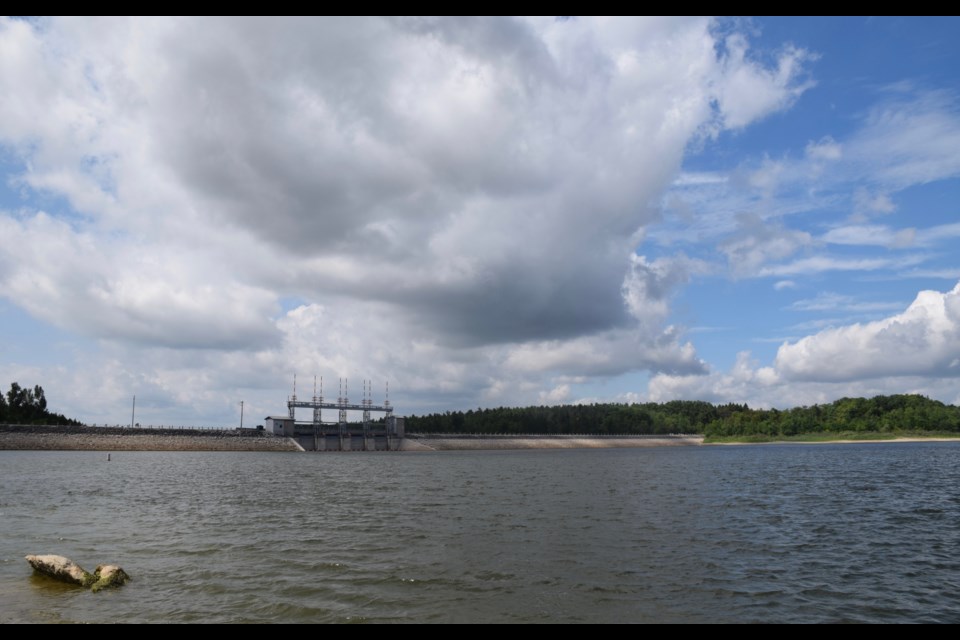Fair warning: Belwood Lake has a toxin problem.
Blue-green algal blooms rich in microcystin have been discovered in the reservoir, which is located a few kilometres east of Fergus. It can make you sick.
Low water levels and high temperatures have contributed to the production of the blooms, which were found recently in the boat launch area and along the dam.
Belwood Lake is 12-kilometres long, but it appears the blooms are concentrated in the south end, near the park.
A number of warning signs have been posted by Wellington-Dufferin-Guelph Public Health at the reservoir, part of Grand River Conservation Authority system, and users of the lake are urged to take precautions. Microcystin can be noxious if ingested, but there have been no reports of human illness from it at Belwood.
Cam Linwood, GRCA spokesperson, said Friday that the face of the Belwood Lake dam is where most of the algae was resting on Thursday. The old quarry swimming area is not affected.
“As the reservoir at Belwood Lake Park has no designated swimming area, any impact on park usage would be limited to those who are using the reservoir for boating activities,” Linwood said in an email. “The swimming area at the old quarry within the park is not affected by this algae bloom.”
Monica Irwin and her daughter Kristen Gergely drove about 45 minutes from Georgetown Friday morning to go kayaking in Belwood. They were not aware of the algae bloom problem, nor familiar with microcystin.
“I guess we’ll just be more careful,” said Irwin. “We’re not going to turn around and go home. We’ll use hand sanitizer.”
“It’s important to be aware of it,” said Gergely. “I’ll be extra careful.”
There were a number of boaters on the lake Friday, including sailboats with several children in them.
The GRCA is asking visitors not to swim in the lake, to keep children and pets away from the algae, and to generally avoid all contact with the blooms. Fish from the lake is not safe to eat, and the water is not safe for drinking or any other purpose. Boating is allowed.
There are roughly 335 cottages around the reservoir, private campgrounds and day camps, and swimming is common in those areas.
An algae bloom is a rapid growth and accumulation of algae, often along lake shores. Cyanobacteria blooms are referred to as blue-green algae. Mats of decaying algae on the shoreline can release microcystin into the water.
Algae feeds on Phosphorus, a chemical that is naturally occurring in soil, and also abundant in manure, fertilizers and human waste.
